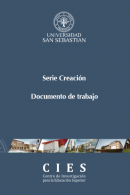
Body fat and its relationship with clustering of cardiovascular risk factorsBody fat and its relationship with clustering of cardiovascular risk factors
| PROCEDENCIA(S): | Ciencia y Medicina, Ciencias de la Salud, Ciencias para el Cuidado de la Salud, USS Santiago. |
|---|---|
| CATEGORÍA(S): | Anatomía y Morfología, Endocrinología y Metabolismo, Hematología, Medicina Clínica, Nutrición y Dietética, Sistema Cardiovascular y Cardíaco. |
| AUTOR(ES): | Giovanna Valentino / María José Bustamante / Lorena Orellana / Verónica Krämer / Samuel Durán / Marcela Adasme / Alejandra Salazar / Camila Ibara / Marcelo Fernández1 , Carlos Navarrete 3 and Mónica Acevedo. |
| TIPO DE MATERIAL: | Artículos, Encuestas, Investigación. |
| ARCHIVO: |
 Reconocimiento CC BY. Esta obra está bajo una Licencia Creative Commons Reconocimiento CC BY 4.0 Internacional.
Reconocimiento CC BY. Esta obra está bajo una Licencia Creative Commons Reconocimiento CC BY 4.0 Internacional.
Background: Body mass index (BMI) and waist circumference (WC) are the most commonly measured anthropometric parameters given their association with cardiovascular risk factors (RFs). The relationship between percentage body fat (%BF) and cardiovascular risk has not been extensively studied.
Aims: This study evaluated %BF and its relationship with cardiometabolic RFs in healthy subjects and compared these findings with the relationship between BMI/ WC and cardiovascular RFs.
Methods: This was a cross-sectional study of 99 males and 83 females (mean age 38 ±10 years) evaluated in a preventive cardiology program. All subjects completed a survey about RFs and lifestyle habits. Anthropometric parameters, systolic blood pressure (SBP), diastolic blood pressure (DBP), fasting lipid profile, and blood glucose were collected. Body fat was determined using four skinfold measurements. Fat mass index (FMI) was also calculated.
Results: Percentage body fat was significantly and directly associated with total cholesterol (R2 =0.11), triglycerides (R2 =0.14), low-density lipoprotein cholesterol (R2 =0.16), non-high-density lipoprotein cholesterol (R2 =0.24), fasting blood glucose (R2 =0.16), SBP (R2 = 0.22), and DBP (R2 =0.13) (p<0.001 for all) and inversely related to high-density lipoprotein cholesterol (R2= 0.32; p<0.001). When the models of %BF, FMI, WC, and BMI were compared, all of them were significantly related to the same cardiometabolic RFs and the clustering of them.


